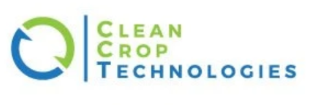
The Challenge: Bridging the Funding Gap
To support companies facing the so-called "commercialization valley of death,” a widely-recognized funding gap that exists between early-stage support offered by angel investors and later-stage support historically provided by venture capital and strategic investors.
About InnovateMass
The InnovateMass program provides up to $350,000 in grant funding and technical support to applicant teams deploying new clean energy technologies or innovative combinations of existing technologies with a strong potential for commercialization. Successful applicants will propose projects that address important energy challenges within our four focus areas, help to grow the state’s clean energy economy, and contribute to Massachusetts’ continued clean energy leadership.
The current round of InnovateMass grant funding provides a “Gridtech Spotlight” opportunity to partner with a Massachusetts electric utility on a grid technology demonstration. MassCEC will award at least two Gridtech project proposals in this round. MassCEC will still consider and award non-Gridtech project proposals in this round. Please refer to the accompanying Spotlight Appendix for a list of utility project partnership opportunities and note that concept papers to project partners are due by February 17, 2025.
We're excited that you're considering applying to one of our funding opportunities! Please also use Massachusetts' Business Front Door service, which suggests additional state resources every step of the way as your company grows.
Funding Schedule
InnovateMass is a rolling funding program that operates under a quarterly deadline schedule. The next upcoming deadline is March 17, 2025. All applications are reviewed until program funding is exhausted.
| Process Step | Approximate Timing |
|---|---|
| Process Step Concept papers due |
Approximate Timing February 17, 2025 |
| Process Step Next application deadline |
Approximate Timing March 17, 2025 |
| Process Step Notification of finalist status | Approximate Timing Within 8 weeks of quarterly deadline date |
| Process Step Pitch coaching for finalists | Approximate Timing 1.5 to 3 months from quarterly deadline date |
| Process Step Finalists pitch | Approximate Timing 2 to 4 months from quarterly deadline date |
| Process Step Final award decisions | Approximate Timing Approximately 6 months from quarterly deadline date |
| Process Step Contracting concludes; projects begin | Approximate Timing Approximately 2 months from award notification |
Who's Eligible
Eligible applicants include climatetech startup companies.
Projects must apply as an Applicant Team, which includes a “Lead Applicant” and one or more Demonstration Project Partner(s).
For full Program details, please refer to the InnovateMass Request For Proposals (RFP)
Apply
Application Process
This standard Program invites participation in a two-part application process:
- Submit an application
- If invited, pitch proposal to a panel of program judges
The Gridtech Spotlight component of the program entails a three-part application process:
- Submit concept papers to partners
- Submit application
- If invited, pitch proposal to a panel of program judges
For full Program details, please refer to the InnovateMass RFP.
Application Materials
Send completed application to: innovate@masscec.com
FAQs
Additional Resources
The Massachusetts Founder Network aims give Massachusetts startup founders equitable access to resources that will help their companies grow.
Learn about Incubators and Accelerators in Massachusetts.
2024 InnovateMass Awardees

florrent
- Awarded $244,458 with $122,916 in total cost share
- florrent is an advanced materials company pioneering bio-derived activated carbon technology to develop high-energy-density ultracapacitors, enabling affordable and efficient energy storage solutions for power generation, transportation, and industrial sectors, while promoting environmental justice through a sustainable supply chain powered by hemp biomass.

STec Technology, Inc.
- Awarded $220,000 with $130,000 in total cost share
- STec Technology, Inc. is advancing its Reactive Cyclical Induction (RCI) System, which reduces CO2 and NOx emissions from diesel marine engines, with pilot testing on a 265HP engine in New Bedford Harbor and plans to scale to a 2000HP fishing vessel.

Matcha Electric
- Awarded $335,500 with $208,300 in total cost share
- Matcha Electric is a Boston-based technology company delivering turnkey EV charging solutions for multifamily properties, with initiatives like "PowerUp Mass" installing no-cost chargers in affordable housing communities to make clean transportation accessible and advance EV adoption in underserved areas.

Clean Crop Technologies
- Awarded $350,000 with $176,541 in total cost share
- Clean Crop Technologies uses cold plasma to remove pathogens from seeds, enhancing yields, reducing food waste, and improving food safety with only electricity and air, and is piloting its Clean Current technology with Chang Farm to validate its commercial readiness in the sprout production sector.
Additional Funding Opportunities
AmplifyMass
$300,000
Rolling
Clean Energy Internship Program for Employers
$4,320/intern for Fall or Spring session; $8,640/intern for Summer session
